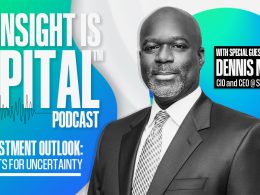Last week, I noted that our standard model (which is based on peak-to-peak earnings) suggested a somewhat higher 10-year total return near 6.7% annually. The difference between that model and the forward operating earnings model above is that the peak-to-peak model calculates a growth rate based on the position of earnings within a long-term growth channel, and does not formally take profit margins into account. The chart below provides a good range of what our most reliable valuation models project for S&P 500 total returns over the coming decade, and presents the complete post-war history.

Though each of our metrics is slightly different, all concur that the market was moderately, but not historically undervalued, at the 2009 low, which briefly approached the level of valuation that was observed at the 1970 low, but was nowhere close to the valuations seen at points such as 1950, 1974 and 1982. I clearly underestimated the willingness of investors to drive stocks back to strenuous overvaluation so quickly. Earlier this year, the market was more overvalued than at any point prior to the late-1990's bubble, and is currently near the same level of overvaluation as the 1972 and 1987 market peaks. At present, all concur that the S&P 500 is most likely priced to deliver a 10-year total return of roughly 6%, albeit with the likelihood of significant interim volatility. Stocks are emphatically not cheap on a historical basis. Analysts who encourage investors to take a different view on valuations should at least be expected to present similarly extensive historical evidence supporting those perspectives.
[Important Notes - A spreadsheet including forward operating earnings estimates (bottom-up are most common) and the most recent four quarters of index revenues can be downloaded at no charge by registering with www.standardandpoors.com. To compute the current 12-month FOE from 2010 and 2011 estimates, take the weighted average. For July (month 7), the 2010 estimate was 82.15, and the 2011 estimate was 94.60, producing a weighted average of (12-7)/12 * 82.15 + 7/12 * 94.6 = 89.41, with 12-month trailing revenues of 918.98 for the index. The calculation of g in the model above uses trailing 12-month revenues and is calibrated on that basis. The implied 10-year rate of total return can be compared with potential risks and alternative rates of return as one chooses. Of course, it's up to individual investors to decide what level of potential return is acceptable, but keep in mind that historically, investors have not generally tolerated low or mid single-digit implied equity returns for long, so lower projected returns are also associated with dramatically higher risk of intermediate-term loss. Investors who believe that a 10-year expected return in stocks of about 6% is an outstanding prospect relative to historical and probable market volatility, and believe that other investors, in aggregate, will embrace that same belief indefinitely, are welcome to classify stocks as "fairly valued" here. We are not in that category].One final note to our colleagues in finance - we read a lot of research here - articles, blogs, news clips, subscription services, academic papers, and so forth. You'll see comments and links all over our research referencing various sources. We're happy to see our own work picked up, and are particularly pleased when professors use it in their classes. But come on, guys - when you use someone's content, or agree with someone's point, acknowledge the person and then add your own work. Don't just lift models or material. Bill and I do our best to always include attribution when we use other people's work (send us a note if we miss one!) - except that when we criticize someone's approach, we may omit names unless the person appears to be damaging or misleading investors. I know this is the age of the internet, but common courtesy still applies. None of us is 13 anymore.
Economic risks continue
Last week, new claims for unemployment remained within their recent range at 457,000, GDP growth came in at a disappointing 2.4% for the second quarter, nearly half of which represented inventory accumulation, the ECRI Weekly Leading Index deteriorated to a -10.9% growth rate, and the markets were cheered somewhat by a Chicago Purchasing Managers Index above 60. Clearly, there are cross-currents to the data here. For our part, we are closely focused on the leading components of the data, rather than measures that provide less timely information.













